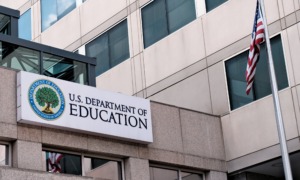 LIGHTSPRING/SHUTTERSTOCK
LIGHTSPRING/SHUTTERSTOCK
More than 30 years ago, when I was a reporter for a daily newspaper, I was assigned a story about what looked like a big change in the local crime rate. I don’t remember if it was an increase or a decrease. But when I called experts in criminal justice and statistics they told me the same thing: A change in just a single year tells you nothing. It could be no more than random chance.
To which my editor replied, quite seriously: “Thanks a lot. You just reported us out of a good story.”
That brings me to a recent Associated Press story about the federal government’s annual Child Maltreatment report. The story begins this way:
“Newly released federal figures show a sharp rise in child abuse fatalities in the U.S., with the bulk of the increase occurring in two states — Indiana and Texas — where child-welfare agencies have been in disarray.”
But a close look at the data shows there is both more, and less, to the story than that suggests.
For starters, child welfare in Indiana and Texas have been in “disarray” for decades. The increase in fatalities occurred in 2016. (As with foster care data, the Chil
So what really changed in 2016?
Possibly nothing. It was a one-year change; it may have been a fluke.
What happened in Indiana
Or, in the case of Indiana, where the number of such deaths was far higher than in any year since at least 2008, and where there are signs of a pattern over several years, it may have been because of a foster care panic, a sharp, sudden spike in the number of children torn from their homes.

From 2013 through 2016 the number of children taken from their homes in Indiana over the course of a year soared by more than 60 percent, with a 14 percent increase in 2016 alone. By 2016, Indiana was taking away children at the fourth-highest rate in the United States, well over double the natio
d Maltreatment reports generally are released more than a year late.)
nal average. Indiana is such a glaring outlier that, just weeks after being hired, outside consultants singled out the high rate of removal as one of two key challenges facing Indiana child welfare.
During Indiana’s years of panic, which began in 2014, there were an average of 51 child abuse deaths each year. In the six years before the panic the average was 32. So now we’re not talking about just a single year.
The trend in Indiana fits a pattern. Over and over foster care panics have been followed by increases in child abuse fatalities. And that makes sense.
The more child protective services workers are overloaded with false allegations — nationwide more than 80 percent of child abuse reports are false — trivial cases and cases in which family poverty is confused with neglect, the less time they have to investigate any case properly. So more children in real danger are missed.
The figures in the Child Maltreatment report represent total child abuse fatalities, not just those where the child was previously known to the child protective services agency. But even in these cases foster care panic can play a role.
Like most states that have seen their foster care populations soar, Indiana is blaming the increase — falsely — on the opioid epidemic. In fact, as I’ve written before, any such increase is due to child welfare’s typical knee-jerk failed response to the opioid epidemic. That response may be causing more children to die. As Indiana juvenile court judge Marilyn Moores told the Associated Press:
“[P]arents, because of addiction, aren’t seeking intervention because their kids are going to be removed. It allows kids to die. It’s a fact.”
What happened in Texas
Texas is even more complicated.
The official number of children taken from their homes in Texas has remained fairly stable in recent years. But we don’t really know what that means, because nearly two-thirds of Texas placements are never reported to the federal government.
As for child abuse fatalities: Yes, the reported number in Texas increased from 162 in 2015 to 217 in 2016. But sadly, when you go all the way back to 2008, Texas typically has more than 200 child abuse deaths per year. The years 2013 to 2015, when deaths suddenly dropped to no more than 162, appear to have been a fluke.
That fluke may have helped lower the figure for the entire nation during those years. So the “sharp rise in child abuse fatalities in the U.S.” may be partly the consequences of a foster care panic in Indiana and a return to tragedy-as-usual in Texas.
Accident or neglect?
Other factors muddy the waters still further. Whether a child’s death is caused by an accident or maltreatment is not as clear-cut as one may expect.
Consider this hypothetical case:
Early one Sunday morning, a young child finds a way to unlatch the back door while his parents are asleep. He wanders off, falls into a body of water and drowns. Accident or neglect? If the body of water is a pool behind a McMansion, it probably will be labeled an accident. If it’s a pond behind a trailer park, it probably will be labeled neglect. More than a decade ago, in Florida, a so-called record number of child abuse deaths probably was no more than the state child abuse death review team pressuring authorities to define more accidents as neglect.
So, did child abuse deaths really suddenly plummet and then rise again in Texas? Or were there changes, written or unwritten, in policies, protocols and definitions?
Multiply all the variables and more by 50 and it illustrates why it is almost impossible to draw conclusions from any change in nationwide child abuse fatality data, let alone a single-year change.
We can do better
That doesn’t mean we are completely in the dark about how to reduce child abuse deaths. But if that’s really the goal we’re going to have to adopt a radically different agenda, based on what really works, not what makes helping professionals feel good and lets politicians preen about how they “cracked down on child abuse.”
Here again, there are lessons from Texas — specifically from a study released in 2009 by a liberal think tank in that state, the Center for Public Policy Priorities (CPPP).
Before they did this study, CPPP was the foremost advocate in Texas for a take-the-child-and-run approach to child welfare. But that seemed to change after they took a hard look at what works — and what doesn’t. Here’s what they found:
- The rate at which people report child abuse does not change the number of child abuse deaths.
- The rate at which a state screens reports for investigation does not change the number of child abuse deaths.
- The rate at which a state takes children from their parents does not change the number of child abuse deaths.
In short, none of the traditional investigative and “police” functions of child protective services contributes anything to raising or lowering the rate of child abuse fatalities.
That means almost all the recommendations from that Keystone Kops of Commissions known as the Commission to Eliminate Child Abuse and Neglect Fatalities, which revolve around these sorts of police functions, would move us in the wrong direction and make children less safe.
A very large haystack
The CPPP report doesn’t say why these approaches don’t work, but it’s not that hard to figure out.
The number of children known to have died of child abuse in America is horrifying: at least 1,700 in 2016. In fact, even if the number were 1 it would be horrifying, since the only acceptable goal for child abuse fatalities is zero. But for the sake of argument let’s assume the real number is twice as high, 3,400.
There are more than 73.5 million Americans under age 18. Of that total, more than 14.5 million live in poverty. That is one gigantic haystack. Why in the world would anyone think that, say, doubling or tripling the number of families investigated or children removed would really help us find more of those 3,400 needles in time?
So everything we’ve ever heard from anyone claiming or implying that hiring more caseworkers to investigate more families and take away more children will save more children’s lives is flat wrong. So is every statement from a politician or a child protective services agency chief urging us all to report our slightest, most absurd suspicions to a child protective hotline because “you just might save a life.” At best, it won’t help. At worst, it actually increases the likelihood that children will die.
What can we do instead?
The CPPP report found three key factors correlated with higher rates of child abuse fatalities, none of which should surprise anyone:
- High rates of poverty
- High rates of teen pregnancy
- Low rates of services to prevent child maltreatment.
That means, of course, if we took some of the millions of dollars states waste on caseworker hiring binges and needless foster care whenever there is a high-profile tragedy and spend it instead on proven prevention programs that focus on ameliorating the worst effects of poverty, then, finally, we might see a decline in child abuse deaths that’s significant and sustained.
We might also reduce the burden on caseworkers caused by chasing down all those false allegations and poverty-confused-with-neglect cases, giving them a better chance to find the needles in that giant haystack, reducing child abuse deaths still further.
Even editors wouldn’t complain about a story like that.
Richard Wexler is executive director of the National Coalition for Child Protection Reform





























